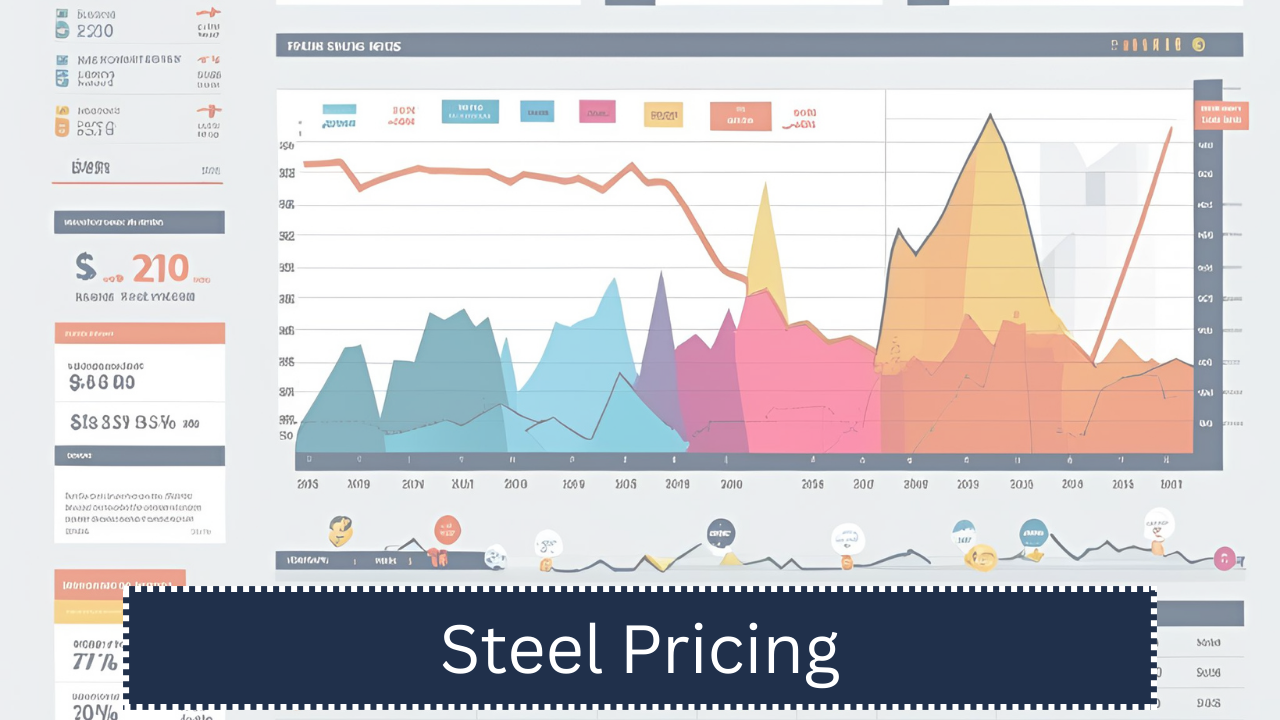Steel plays a vital role in many industries like construction, automotive, manufacturing, and infrastructure. Whether it is used in building bridges or making cars, steel is in high demand. But the price of steel is never fixed. It keeps changing depending on various factors.
Understanding what causes these price changes helps businesses plan better and reduce unexpected costs. This guide explains the major reasons why steel prices go up or down and provides a clear overview for buyers, manufacturers, and investors.
Main Factors That Influence Steel Prices
Many reasons contribute to the fluctuation of steel prices. Below are the most important ones:
1. Raw Material Costs
Steel is made using raw materials like iron ore, coal (coking coal), and scrap metal. If the prices of these inputs go up, the cost of steel also increases.
- Iron ore and coal are key inputs for traditional blast furnace steel production.
- Scrap metal is essential for electric arc furnace (EAF) steelmaking, which is common in many regions.
Major Raw Materials and Their Impact on Steel Pricing
| Raw Material | Role in Steelmaking | Effect on Price |
|---|---|---|
| Iron Ore | Primary source of iron | Higher cost increases steel price |
| Coking Coal | Used for energy in blast furnaces | Affects operating cost of steel mills |
| Scrap Steel | Recycled input for EAF | Cheap scrap lowers steel price |
2. Supply and Demand
The basic rule of economics applies strongly in the steel market. If steel supply is low and demand is high, prices rise. If supply is high but demand falls, prices drop.
- High demand in construction or automotive industries pushes prices up.
- Oversupply by large producers can cause price crashes.
Supply-Demand Impact on Price Trends
| Condition | Effect on Steel Price |
|---|---|
| Demand > Supply | Prices increase sharply |
| Supply > Demand | Prices decrease |
| Stable demand and supply | Prices remain moderate |
3. Energy Costs
Energy is essential for steel production. Steel mills use large amounts of electricity, gas, and coal to operate furnaces and machinery.
- When energy prices rise, production becomes expensive.
- Mills may pass the extra cost to buyers, increasing steel prices.
Common Energy Sources and Influence
| Energy Source | Use in Steel Industry | Impact on Cost |
|---|---|---|
| Electricity | Power for electric arc furnaces | Directly affects operational costs |
| Natural Gas | Used in heating and smelting | Affects furnace and machinery cost |
| Coal | Used in blast furnaces | Impacts integrated steel plants |
4. Transportation and Logistics
Steel is bulky and heavy. It is often shipped across countries or continents. So, transportation costs add to the final price.
- Fuel prices, shipping delays, and logistics issues increase cost.
- Disruptions in ports or railways can cause supply problems.
Transportation Factors and Pricing
| Factor | Impact on Steel Price |
|---|---|
| Fuel price increase | Raises delivery costs and total price |
| Port delays or strikes | Affects global supply chain |
| Long-distance shipping | Increases final product cost |
5. Government Policies and Tariffs
Steel prices are also affected by trade rules, import/export duties, and taxes imposed by governments.
- Import tariffs can raise the cost of foreign steel.
- Subsidies to local industries may lower domestic prices.
- Environmental laws can make production more expensive.
Policy-Driven Price Effects
| Policy Type | Effect on Price |
|---|---|
| Import Tariffs | Increases cost of imported steel |
| Export Bans | Creates shortages, raises global prices |
| Carbon Emission Taxes | Raises cost of steel production |
6. Global Market Trends
Steel is a globally traded commodity. International events often influence pricing.
- Economic growth in large countries (like China or India) increases demand.
- Global financial crises or recessions reduce demand and lower prices.
Global Events and Steel Pricing
| Global Trend/Event | Effect on Steel Market |
|---|---|
| Economic Boom | Increases demand and price |
| Global Recession | Reduces demand, lowers price |
| Trade Wars | Causes uncertainty and price fluctuations |
7. Seasonal Demand
Some industries use more steel during specific seasons. For example, construction projects increase in summer, raising demand and prices.
- Cold weather may slow down construction, lowering demand.
- Agricultural steel needs may rise during harvest or equipment buying season.
Seasonal Trends in Steel Demand
| Season | Steel Usage Trend | Impact on Price |
|---|---|---|
| Summer | High construction activity | Price may rise |
| Winter | Lower demand due to slow projects | Price may fall |
| Harvest Season | Increased demand in rural sectors | Regional price spikes possible |
8. Currency Exchange Rates
Steel is traded globally, often in US dollars. If a country’s currency becomes weak compared to the dollar, imported steel becomes expensive.
- Local buyers must pay more in local currency for the same amount.
- Currency volatility affects export and import pricing.
Currency Fluctuation Impact
| Currency Condition | Effect on Steel Price |
|---|---|
| Weak local currency | Imported steel becomes expensive |
| Strong local currency | Easier to import steel at lower cost |
9. Production Capacity and Technology
Steel companies with advanced technology can produce steel more efficiently, reducing overall cost.
- Modern plants reduce waste and use less energy.
- Overcapacity (producing more than needed) can lower market prices.
Technological Impact on Steel Cost
| Factor | Effect on Price |
|---|---|
| Efficient technology | Lowers cost per unit |
| High production capacity | Can lead to oversupply and price drop |
| Old outdated plants | Increase cost due to inefficiency |
Wrapping Up
Steel prices are influenced by a wide range of factors. From raw material costs to international politics, every element plays a role in shaping the market. For buyers, manufacturers, and traders, tracking these factors is important for smart planning and budgeting. By understanding what drives steel prices, businesses can reduce risk and make better financial decisions.

